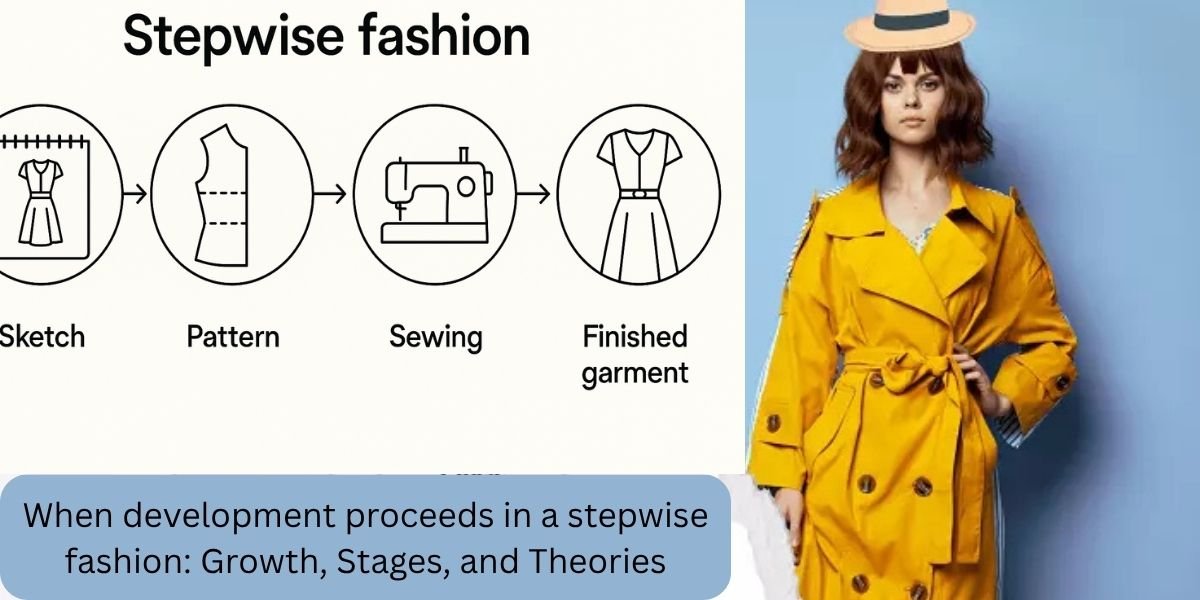Human development is a complex process that can occur in different patterns—some gradual, some sudden. When development proceeds in a stepwise fashion, it means progress happens in distinct stages rather than as a smooth, continuous flow. This article explores stepwise development, key theories, and related concepts in psychology and human growth.
When Development Proceeds in a Stepwise Fashion with Periods of Growth, Quizlet?
On Quizlet and in developmental psychology, stepwise development refers to progress that occurs in clear, distinct stages with periods of rapid growth followed by plateaus. This contrasts with continuous development, which is gradual and cumulative.
🔹 Example:
- Language development (e.g., a child suddenly starts speaking in sentences after months of babbling).
- Puberty (physical changes happen in phases rather than steadily).
When Development Proceeds in a Gradual Fashion as a Cumulative Process, We’d Say That Development Is Taking a N-________ Trajectory?
The missing word is “continuous.”
🔹 Continuous development means growth builds steadily over time without distinct stages.
🔹 Example:
- Learning to walk (improves gradually with practice).
- Vocabulary expansion (increases steadily rather than in jumps).
Which Theorist Is Credited with Proposing the Psychosexual Stages of Development in Quizlet?
The correct answer is Sigmund Freud.
Freud’s psychosexual stages of development suggest that personality develops in five distinct phases:
- Oral Stage (0-1 year) – Focus on mouth (sucking, biting).
- Anal Stage (1-3 years) – Toilet training, control.
- Phallic Stage (3-6 years) – Oedipus/Electra complex.
- Latency Stage (6-puberty) – Sexual urges dormant.
- Genital Stage (puberty+) – Mature sexual interests.
Freud believed unresolved conflicts at any stage could lead to fixations in adulthood.
What Development Involves Growth and Changes in the Body and Brain?
This refers to physical and neurological development, including:
- Motor skills (crawling, walking, writing).
- Brain development (neural connections, cognitive abilities).
- Puberty (hormonal changes, growth spurts).
🔹 Example:
- A baby’s brain triples in size by age 3.
- Adolescents experience synaptic pruning (brain efficiency improves).
When Development Proceeds in a Stepwise Fashion Answers
Stepwise development is characterized by:
✅ Distinct stages (e.g., Piaget’s cognitive stages).
✅ Periods of rapid change followed by stability.
✅ Critical phases where certain skills must develop (e.g., language acquisition).
🔹 Example:
- Erik Erikson’s psychosocial stages (each stage has a unique crisis to resolve).
When Development Proceeds in a Stepwise Fashion Quizlet
On Quizlet, stepwise development is often linked to:
📌 Stage theories (Freud, Piaget, Erikson).
📌 Discontinuous growth (sudden leaps in ability).
📌 Milestones (e.g., walking at ~12 months).
🔹 Quizlet Question Example:
“True or False: Stepwise development implies smooth, gradual progress.”
Answer: False (it involves stages).
Which Theorist Is Credited with Proposing the Psychosexual Stages of Development?
Again, the answer is Sigmund Freud. His theory remains one of the most famous stage-based models in psychology.
When Development Proceeds in a Stepwise Fashion Brainly
On Brainly, users explain stepwise development as:
🔹 “Progress in clear phases, like climbing stairs.”
🔹 “Sudden changes, like a child starting to read fluently.”
🔹 Common Brainly Example:
“Piaget’s stages of cognitive development show stepwise growth—kids don’t slowly become logical thinkers; they shift abruptly between stages.”
According to Lifespan Development, What Encompasses Eight Stages?
This refers to Erik Erikson’s psychosocial stages:
- Trust vs. Mistrust (0-1)
- Autonomy vs. Shame (1-3)
- Initiative vs. Guilt (3-6)
- Industry vs. Inferiority (6-12)
- Identity vs. Role Confusion (12-18)
- Intimacy vs. Isolation (18-40)
- Generativity vs. Stagnation (40-65)
- Integrity vs. Despair (65+)
Each stage represents a crisis that shapes personality.
Which of the Following Illustrates Conservation?
Conservation (a concept from Piaget’s theory) means understanding that quantity remains the same despite changes in shape/appearance.
🔹 Example:
- A child realizes pouring water from a short glass into a tall glass doesn’t change the amount.
🔹 Non-Example:
- A toddler thinks a stretched-out clay ball has “more” clay.
Balancing, Running, and Jumping Are All Examples of
These are gross motor skills—physical abilities using large muscles.
🔹 Fine motor skills (e.g., writing, buttoning) involve small muscles.
________ Are Concepts (Mental Models) That Are Used to Help Us Categorize and Interpret
The missing term is “schemas.”
🔹 Schemas (Piaget’s theory) are mental frameworks for organizing information.
🔹 Example:
- A child’s “dog schema” may include all four-legged animals until refined.
Key Takeaways
✔ Stepwise development = distinct stages (Freud, Piaget, Erikson).
✔ Continuous development = gradual, cumulative growth.
✔ Freud proposed psychosexual stages; Erikson described psychosocial crises.
✔ Conservation and schemas are key Piagetian concepts.
✔ Physical development includes motor skills and brain changes.
Understanding these patterns helps explain how humans grow physically, cognitively, and socially.
Would you like a PDF summary of developmental theories? Let me know in the comments!

